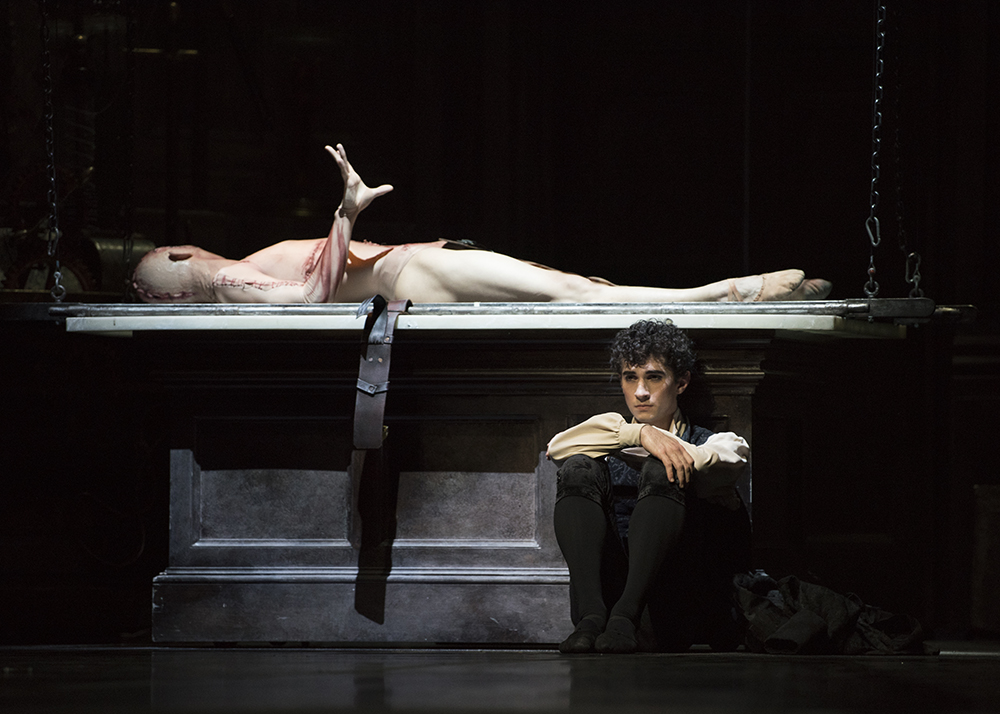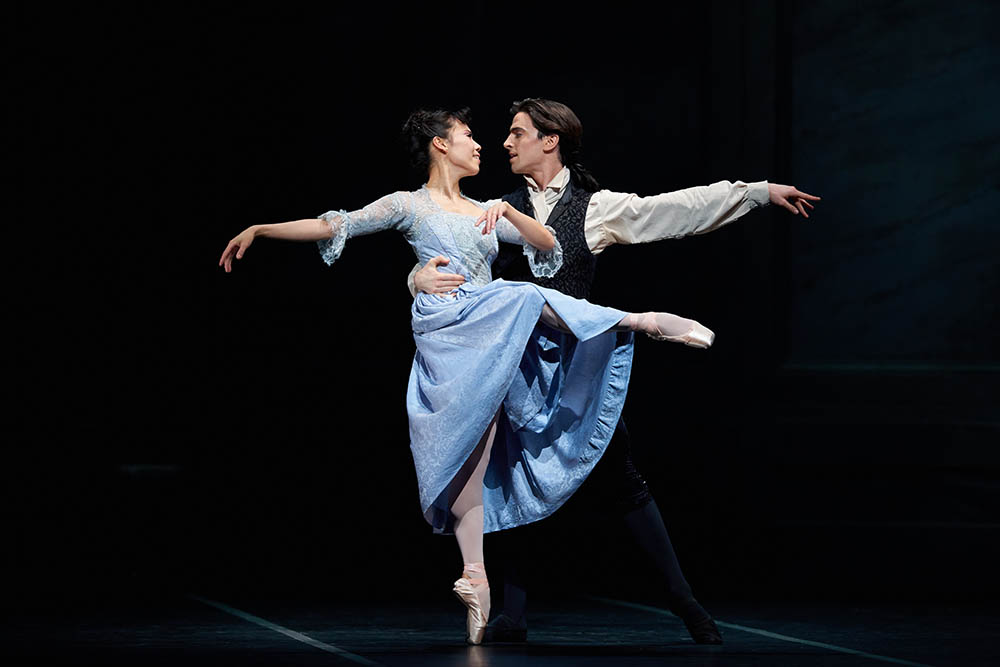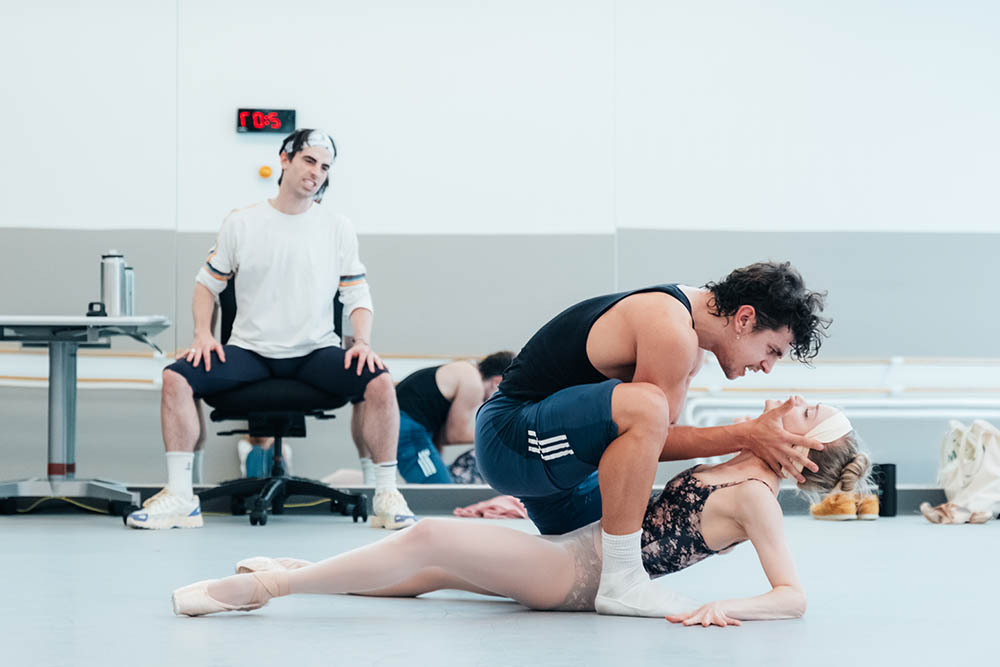A Deep Dive with the Stager of Frankenstein
Understanding Liam Scarlett’s Vision
If the name “Frankenstein” makes you think of a green-faced Boris Karloff with bolts threaded into his neck, then Liam Scarlett’s ballet Frankenstein won’t be what you’re expecting. It’ll be better. Inspired by Mary Shelley’s Gothic horror story Frankenstein; or, The Modern Prometheus, Scarlett delivers far more than scary-monster thrills. Both book and ballet tell a disturbing, tragic tale about the consequences of abandonment, the risks of tampering with the creation of human life, and, most of all, the power of love, both given and withheld.
Scarlett tells the story of Frankenstein through movement in a poetic way, embodying all the dualities of Shelley’s book — love and hate, curiosity and fear, desire, and guilt — within one man, Victor Frankenstein. The big-picture aspects — choreography, dramatic arc, visual elements, and music — combine to tell a compelling story that has drawn global audiences and rave reviews.

We sat down with former SF Ballet soloist and Liam Scarlett Trustee and stager, Lauren Strongin, to get a deeper understanding of the movement, characterization, and intentions behind Scarlett’s ballet.
SF Ballet: How is the movement and choreography distinctly Liam Scarlett?
Lauren Strongin: Liam’s work is rooted in the British style, in his DNA, but what is interesting and singular about Liam’s work is how he breaks from that lineage with a knowledge and appreciation for contemporary movement. At times, he is influenced by Jiří Kylián and Hans van Manen, for example, his work is grounded and human. Allowing these disparate styles to meld, while creating a voice all his own has made his work relevant and important to the ballet canon.
For example, the Creature has a very contemporary movement style while Victor’s movement is more rooted in the classical, the contrast of movement between the Creature and Victor comes together in the final duet, showing Liam’s ability to use these styles as a tool for dramatic storytelling.
In his more classical story ballets like Frankenstein, you can see his deep respect for classical British technique in the footwork and lower body which then allows for freedom in the upper body and port de bras. He often spoke of the movement initiating from the back and allowing the arms to react, as if moving through water.
Liam was an amazing partner, his pas work is very challenging, and the placement of the weight, often off-balance, required trust and coordination from the partners to achieve the effortlessness and freedom to embellish and be in the moment. His work also has a voyeuristic feel, the dancers are not performing for the audience, but we are being let into their world.
Another distinctly Liam trait is the corps work, Liam was a corps dancer in his career, so you will notice the group work is as difficult as the principal work. There are no superfluous movements or “filler” dance sequences for the group, everything is integral to the story.

SFB: Choreographically, Frankenstein is laced with characterization and filled with movement that is distinctly Liam Scarlett. Can you share what audiences can watch for from the dancers and choreography onstage?
LS: Liam took his inspiration from the novel as a jumping-off point and gave more depth to the Elizabeth and Henry characters. The contrast of the Creature’s birth into painful, primal, awkward contemporary movements quickly transforming into clean technique mirrors the Creature’s rapid learning of language and social mores in the novel. He observes young William and Victor and quickly adapts to their movement styles. For Victor, his dissent into guilt, paranoia, and fear is expressed by increasingly internal movements. In the first act, he is quite open and light, and as the ballet progresses he loses his lightness, his focus while dancing with Elizabeth is elsewhere, often not even looking at her while partnering.
As in the novel, there is a time-lapse from the first to the second act and we can see the maturity in the female movements. Elizabeth and Justine become women in the second act, with maturity and a groundedness that comes with life experience. Longing, waiting, and wishing turn to heartbreak for Elizabeth as she feels Victor slip further away from her. Her movement reflects this, she is more introspective as she tries to hold the family together through so much tragedy. Henry is a character that is fairly even throughout the ballet, being the lightness for the other characters to lean on.

SFB: Are there any words of wisdom from Liam that you have gone on to share with the dancers when setting the ballet? What were his insights for the dancers interpreting these characters and his choreography?
LS: It is interesting how as we stage Liam’s work you can hear his voice in certain moments and can absolutely see him in all the movements. Liam was a very active choreographer who loved to demonstrate all the roles, which now allows us to have a mental picture of what the ideal movement should look and feel like. He was extremely musical so that was always integral to the interpretation of the characters and he valued a very honest, human approach. Specifically in Frankenstein, to be able to move and act the way these characters are described in the novel was important. The gestural subtleties and the use of silence are also very powerful tools for the dancers. The pas de deux are conversations so he always wanted to be able to read what the dancer was trying to express, which requires some introspection and discovery from each dancer and couple. With that said, he also really loved to hand it over to the artists because he truly trusted them with his work. There was always room for personal interpretation, especially in the role of the Creature, which as a dancer is so liberating and makes the process truly collaborative. I try to hold on to all of this while staging Frankenstein.
Frankenstein is onstage this season March 20–26 and April 26–May 4.








